
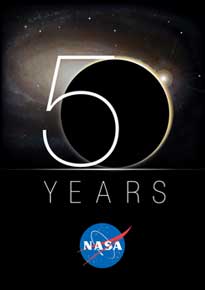
• OCT 1 NASA becomes operational on this day in 1958, following the passage of the National Aeronautics and Space Act by President Dwight Eisenhower on July 29th of that same year.
• OCT 2 Moon is at last quarter.
• 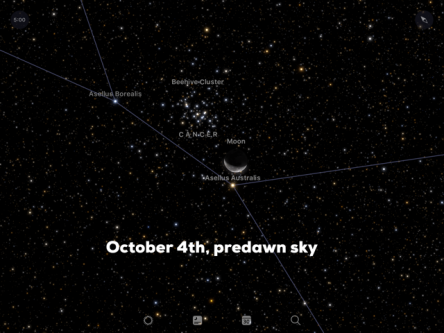 • OCT 4 In the predawn sky, look for the waning crescent moon about 1 degree to the south of the Beehive Cluster, Messier 44.
• OCT 4 In the predawn sky, look for the waning crescent moon about 1 degree to the south of the Beehive Cluster, Messier 44.
• OCT 5 The moon is at perigee, its closest point in its orbit this month at a distance of 227,666 miles at 5:27 PM CDT
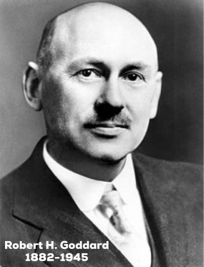 Robert Goddard, the “father of modern rocketry” was born on this day in 1882.
Robert Goddard, the “father of modern rocketry” was born on this day in 1882.
• OCT 8 Moon is at new phase.
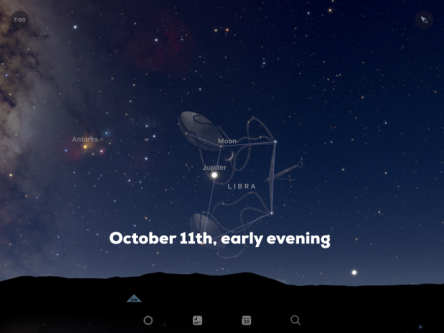
• OCT 11 The waxing crescent moon is just above the planet Jupiter in the western sky after sunset.
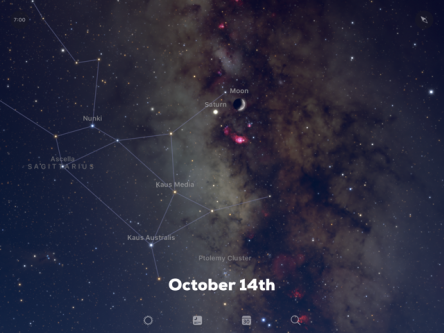
• OCT 14 The waxing crescent moon is now adjacent the planet Saturn in our evening sky.
• OCT 16 The moon is now at first quarter phase.
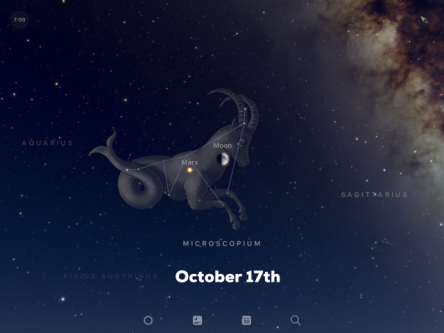
• OCT 17 The waxing gibbous moon is just to the west of the planet Mars in our evening sky.
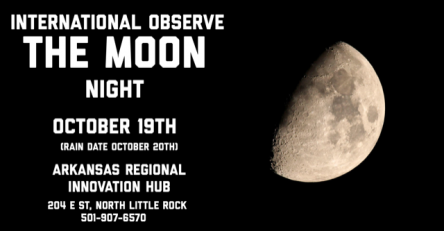
• OCT 19 International Observe the Moon Night at the Arkansas Regional Innovation Hub in NLR, from 7:00 PM to 9:00 PM (see our October feature article for more details).

Subrahmanyan Chandrasekhar, Nobel Prize winning Indian-American astrophysicist who studied the evolution of stars was born this day in 1910.
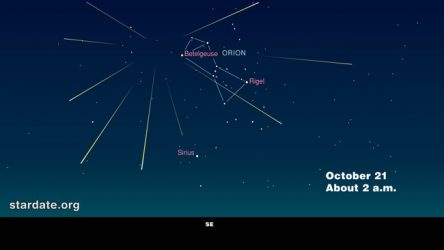
• OCT 21 The Orionid Meteor Shower peaks in the predawn sky. However, a bright gibbous moon will obscure all but the brightest of meteors.
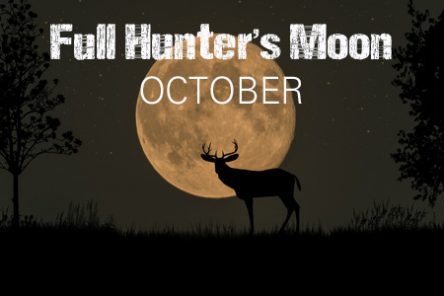 • OCT 26 The moon is at full phase. According to some Native American cultures, this full moon is known as “The Full Hunter’s Moon”, as this was the time of year to start hunting in preparation for the long winter months ahead.
• OCT 26 The moon is at full phase. According to some Native American cultures, this full moon is known as “The Full Hunter’s Moon”, as this was the time of year to start hunting in preparation for the long winter months ahead.